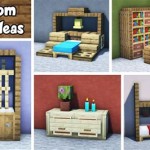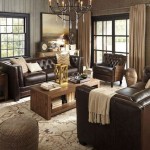How To Decorate Empty Space In a Bedroom
Empty space in a bedroom can feel uninviting and incomplete. However, with thoughtful planning and creative decorating, these areas can be transformed into functional and aesthetically pleasing parts of the room. This article explores various strategies for decorating empty bedroom spaces, focusing on creating a cohesive and personalized environment.
Creating Functional Zones
One effective method for utilizing empty bedroom space is to designate specific functional zones. This involves identifying activities that could benefit from a dedicated area and then designing the space accordingly. For example, an empty corner could be transformed into a reading nook with a comfortable armchair, a small side table for a lamp and books, and a soft rug to define the space. Similarly, a blank wall could become a home office area with a desk, chair, and appropriate shelving. This approach not only fills the empty space but also adds practicality and enhances the room's overall functionality.
When establishing functional zones, consider the natural light and traffic flow within the room. A reading nook might be best situated near a window for natural light, while a workspace might benefit from being positioned away from distractions. Careful planning ensures that each zone integrates seamlessly into the existing bedroom layout.
Incorporating Decorative Elements
Decorative elements play a crucial role in filling empty space and adding personality to a bedroom. Large empty walls can be adorned with artwork, mirrors, or tapestries to create visual interest. A strategically placed mirror can also make the room feel larger and brighter by reflecting light. Shelves can be used to display books, plants, or decorative objects, while tall plants or decorative screens can fill awkward corners and add a touch of nature to the space.
Choosing decorative elements that complement the existing bedroom décor is essential for maintaining a cohesive aesthetic. Consider the color scheme, patterns, and textures already present in the room and select items that harmonize with these elements. This approach creates a unified and visually appealing environment.
Maximizing Vertical Space
Often, the key to decorating empty bedroom space lies in utilizing vertical space effectively. Tall bookshelves, wall-mounted shelves, or even hanging organizers can provide valuable storage while simultaneously adding visual interest to a bare wall. This is particularly useful in smaller bedrooms where floor space is limited.
Vertical space can also be maximized by using tall plants or floor lamps to draw the eye upwards and create a sense of height. Hanging curtains from the ceiling rather than just above the window can also create the illusion of a taller, more spacious room.
Furniture Placement Strategies
Rethinking furniture placement can often reveal opportunities for utilizing empty spaces. A small chaise lounge or armchair could be added to an unused corner, creating a cozy reading spot or a place to relax. A narrow console table placed against a blank wall can provide a surface for displaying decorative items and add visual balance to the room. Experimenting with different furniture arrangements can help identify the most effective use of available space.
When rearranging furniture, consider the traffic flow and functionality of the room. Ensure that there is ample space to move around comfortably and that furniture pieces are placed in locations that make sense for their intended use. This can involve moving existing furniture to new locations to better utilize the available space.
Textiles and Layering
Textiles and layering can play a significant role in adding warmth and personality to an otherwise empty bedroom space. A large rug can define a seating area and anchor the furniture within the space. Adding throw pillows and blankets to a bed or chair can create a sense of coziness and visual interest.
The strategic use of textiles can also tie together different elements within the room and create a cohesive aesthetic. Choosing textiles that complement the existing color scheme and patterns helps to create a harmonious and visually appealing environment.
Lighting Techniques
Lighting plays a vital role in how a space is perceived. A well-placed floor lamp or table lamp can brighten a dark corner and make it feel more inviting. String lights or wall sconces can add a decorative touch and create a warm and inviting ambiance. Layered lighting, combining ambient, task, and accent lighting, can enhance the functionality and atmosphere of a room.
Consider the existing lighting in the bedroom and identify areas that could benefit from additional illumination. Choosing lighting fixtures that complement the overall décor and provide the appropriate level of light for the intended use of the space is essential.
:strip_icc()/cdn.cliqueinc.com__cache__posts__265340__bedroom-layout-mistakes-265340-1534280230983-image.700x0c-20e0c864fb0d4f27967037d41f107c4c.jpg?strip=all)
8 Of The Best Big Bedroom Layouts For Every Need

37 Ideas For Decorating A Blank Wall In Your Home Parachute Blog

Pin On Wondercottage Com

Bedroom Wall Ideas Decorating Blank Walls

12 Brilliant Ways To Use Wasted Space In The Bedroom Houzz

25 Clever Bedroom Wall Decor Ideas To Make The Most Of That Blank Space Hunker Home Room

How To Fill That Big Empty Wall 6 Ideas For Your Blank Meredith Lynn Designs

15 Fast And Creative Ways To Style The Blank Wall Above Your Bed Michael Helwig Interiors

Creative Corner Decoration Ideas For Your Space Designcafe

30 Stylish Bedroom Wall Decor Ideas And Tips
Related Posts







